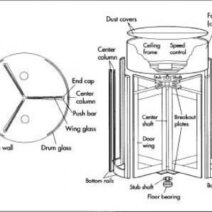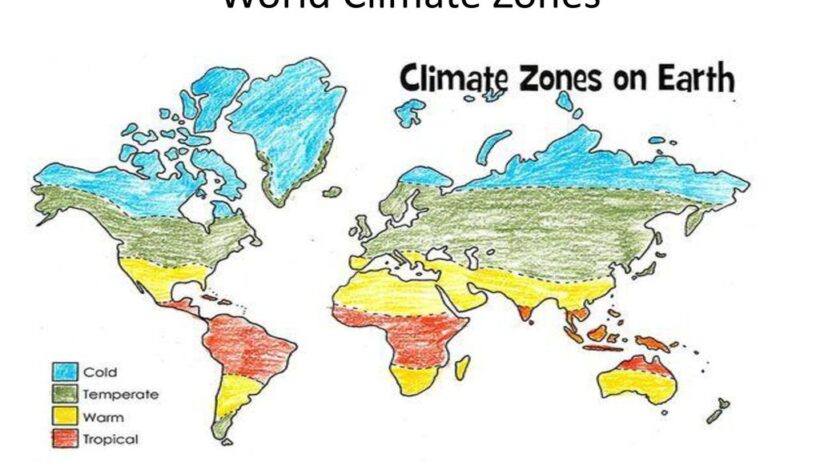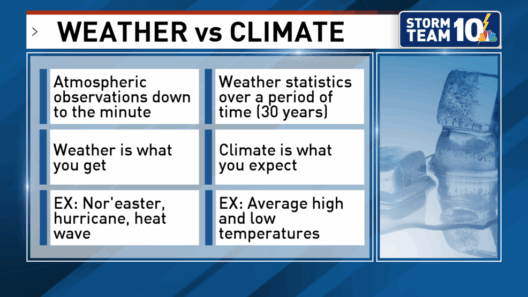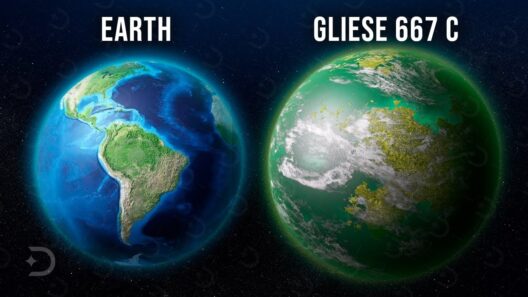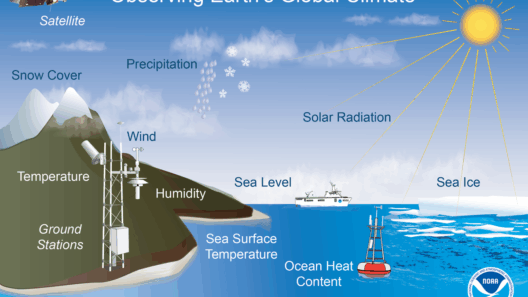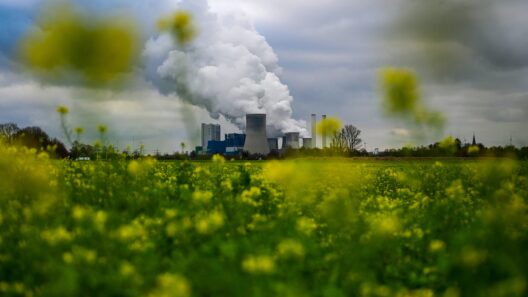Climate, a term often debated and discussed, embodies the long-term atmospheric conditions of a region. Unlike weather, which is ephemeral and can shift in moments, climate is the prevailing pattern over extended periods—typically 30 years or more. Understanding Earth’s climate involves recognizing the diverse zones that encapsulate various ecosystems, agricultural patterns, and human livelihoods. This article delves into the myriad climate zones of our planet, exemplifying how these regions influence both natural and anthropogenic phenomena.
The Earth’s climate system is profoundly influenced by a multitude of factors. Latitudinal position, altitude, topography, and proximity to bodies of water significantly affect climatic conditions. This interplay serves as a framework for categorizing climate into distinct zones, which are characterized by specific temperature ranges, precipitation patterns, and vegetation types.
Discovering the intricacies of Earth’s climate zones offers insights into not only environmental but also societal dynamics.
From equatorial rainforests to polar ice caps, Earth’s climate zones can be broadly classified based on temperature and precipitation. Understanding this classification is essential for grasping the complexity of global climate interrelations.
One commonly referenced system of classification is the Köppen climate classification, which categorizes climates into five primary groups:
1. Tropical Climates
Exemplified by regions close to the equator, tropical climates are characterized by consistently high temperatures and significant rainfall year-round. These climates give rise to rich biodiversity, as seen in the Amazon rainforest and the Congo basin.
The humidity and warmth foster lush vegetation that supports a myriad of wildlife species. Rainforests contribute to global oxygen production and carbon sequestration, playing an essential role in tempering climate change. Understanding these intricate ecosystems provides not only a foundation for conservation efforts but also for sustainable development initiatives that can benefit local communities.
2. Arid and Semi-Arid Climates
In stark contrast to the lushness of the humid tropics, arid and semi-arid climates experience low precipitation levels. These include deserts, such as the Sahara and the Mojave, where temperatures can soar during the day but plummet at night. Vegetation is sparse, with life adapted to conserve water, such as cacti and drought-resistant shrubs.
Human habitation in these regions presents unique challenges. Water scarcity necessitates innovative farming practices like irrigation and the use of native crops. Understanding the climatic constraints can influence sustainability by guiding agricultural development and resource management in these areas.
3. Temperate Climates
Temperate climates enjoy moderate conditions, generally characterized by four distinct seasons. Regions such as the Mediterranean, parts of North America, and much of Europe fall under this classification. These diverse ecosystems host a variety of plant and animal life thanks to moderate temperatures and adequate precipitation.
The agricultural significance of temperate zones cannot be overstated; they yield vital crops such as grains and fruits, supporting substantial populations. This climate’s seasonal variations also influence societal practices, from seasonal festivals to economic activities, underscoring the intertwining of environment and culture.
4. Continental Climates
Continental climates are typified by pronounced seasonal variations, with hot summers and cold winters. Found primarily in the interior of continents, these climates result in significant temperature fluctuations, which can impact agriculture, urban planning, and infrastructure.
Regions within this climatic zone often exhibit strong temperature gradients across short distances. The growing season can be brief, and efforts to grow crops must be precisely timed in accordance with local climatic conditions. Understanding this can enhance agricultural practices and contribute to food security amid changing climate conditions.
5. Polar Climates
Polar regions, encompassing the Arctic and Antarctic, are characterized by extreme cold and dry conditions. These climates pose significant challenges to both natural ecosystems and human habitation. The flora and fauna adapted here are specialized, and the shrinking polar ice caps symbolize one of the most pressing issues of climate change.
Polar climates are not merely ecological zones; they are indicators of global environmental shifts. Studying these regions provides insight into broader climate systems, offering essential data for predicting future changes and creating adaptation strategies.
Understanding the interconnectedness of Earth’s climate zones is paramount in addressing contemporary challenges such as climate change. Ecosystems do not exist in isolation; they interact in a web of interdependence.
Human-induced climate change exacerbates these connections, leading to phenomena such as extreme weather, altering precipitation patterns, and shifting biodiversity distributions. Recognizing these trends enhances our capacity to develop effective mitigation and adaptation strategies, ensuring that both natural and human systems can thrive.
As we navigate through these interconnected topics, it becomes evident that human activity has profound implications for climate zones. Urbanization, deforestation, and industrialization reshape landscapes, often with detrimental effects. Therefore, raising awareness about the importance of preserving various ecosystems while adopting sustainable practices is vital for future generations.
Moreover, climate action requires collaboration across borders. Different countries experience diverse impacts depending on their geographic location, economic status, and social structures. Understanding how climate varies not only within a nation but also globally is crucial for fostering comprehensive, effective responses to climate-related challenges.
In conclusion, the Earth’s climate zones serve as essential markers of environmental and societal interactions. From the exuberant life found in tropical rainforests to the resilience demonstrated in arid deserts, each climate zone possesses unique characteristics that contribute to the broader understanding of our planet’s health. Recognizing and respecting these differences is imperative in the face of climate change as we strive for a sustainable future.


